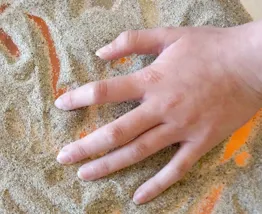3 Case Studies in Primitive Reflex Treatment

The presence of retained primitive reflexes can exacerbate hyperactivity, inattentiveness, and challenges with processing sensory stimuli. Not only does trauma expose primitive reflex dominance, but it also influences overall function. As a physical or occupational therapist, it is vital to help clients integrate their primitive reflexes to reduce their influences on higher skill levels.
Primitive reflexes can be thought of as building blocks for active movement. They are used for protection and survival during infancy. However, when retained, primitive reflexes interfere with coordination, emotional regulation, sensory processing, and executive functioning. Our goal is to integrate these reflexes so that we can see voluntary conscious movements.
When working with clients, we need to know not only what to look for, but also how to manage the symptoms.
Case studies allow us to see what primitive reflexes look like in action and better see how effective treatment strategies can place primitive reflex patterns in the background. Watch as Karen Pryor, PhD, PT, DPT and Varleisha (Gibbs) Lyons, PhD, OTD, OTR/L show you how these reflexes truly impact client function through three case examples highlighted in their transformative online certification course.
Primitive reflexes can be thought of as building blocks for active movement. They are used for protection and survival during infancy. However, when retained, primitive reflexes interfere with coordination, emotional regulation, sensory processing, and executive functioning. Our goal is to integrate these reflexes so that we can see voluntary conscious movements.
When working with clients, we need to know not only what to look for, but also how to manage the symptoms.
Case studies allow us to see what primitive reflexes look like in action and better see how effective treatment strategies can place primitive reflex patterns in the background. Watch as Karen Pryor, PhD, PT, DPT and Varleisha (Gibbs) Lyons, PhD, OTD, OTR/L show you how these reflexes truly impact client function through three case examples highlighted in their transformative online certification course.
Access additional case studies and continue learning from the experts!

This online course will guide you how trauma exposes primitive reflex dominance and influences overall function. Through the lens of a physical therapist and an occupational therapist, this course will help you re-envision treatment planning and strategies. Learn to integrate primitive reflexes and reduce their influences on higher level skills. Plus…
- Be led through case studies on what happens when trauma exposes primitive reflex dominance and influences overall function.
- Learn step-by-step how primitive reflexes highlight the impact on developmental skills, learning, and behavior from function to dysfunction.
- Review the central nervous system anatomy and physiology as it relates to reflexive motor patterns, which includes the cranial nerves, and the various levels of the central nervous system.
- Gain access to case examples, useful handouts, and activities to address handwriting, dressing, eating, and positioning.






